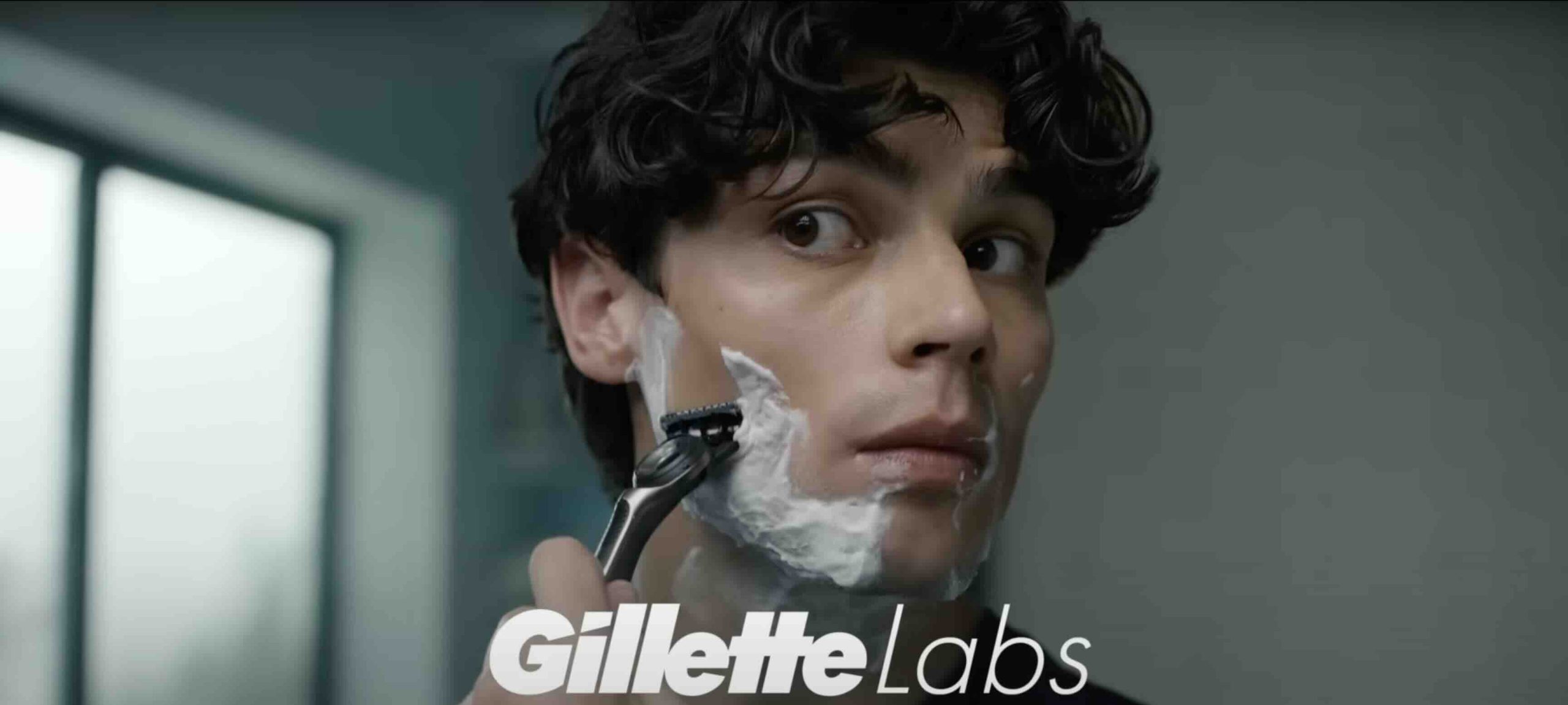Gillette is an interesting example of a brand seeking to revitalise itself with the right balance of freshness and consistency. Back in 2019, I posted here on the brand’s highly polarising public stand against “toxic masculinity”. The campaign, The Best a Man Can Be (1), was full of freshness but had little consistency, literally ripping a hole in the The Best a Man Can Get campaign the brand had used for 30 years. The campaign was heavy on emotion, light on product and seen by many as being preachy and overly negative about its core male audience. Fast forward to today and the brand has returned to The Best a Man Can Get, featuring front and centre the premium Gillette Labs range. In this post, I suggest why with this approach Gillette has a better chance of pulling off the brand revitalisation balancing act.
Background: the 2019 campaign
The 2019 campaign sought to address head on the negative sides of masculinity (e.g. bullying, mansplaining, wolf whistling at female passers by). One sequence that wound up many people up was a scene with two boys play fighting and being told, “That’s not how we treat each other, OK?” The campaign reflected the belief of Gillette’s leadership that the brand needed to “take a stand” in order to attract younger users it was missing out on, as CEO Gary Coombe explained in a conference I attended and posted on.
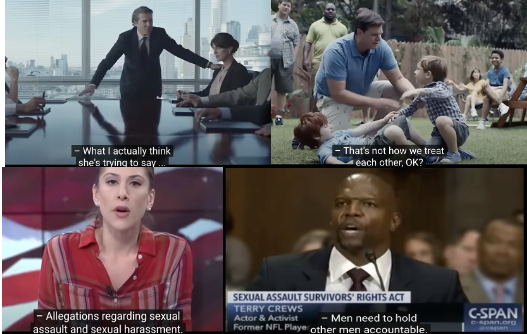
The film was highly self-critical of The Best a Man Can Get campaign Gillette had used consistently for 30 years. Over a video of the campaign, the voiceover asked “Is this the best a man can get? It it?”, before a bunch of young guys ripped through the screen on which the film was being projected.

Tacking toxic masculinity is to of course be applauded. And the campaign did create a big short-term bump in brand visibility, including with the hard-to-reach younger target Gillette wanted to recruit, as I posted on here. However, I raised several concerns with the campaign back in 2019:
- Lack of product integration: innovation had been key to Gillette’s past success, whereas the new campaign had zero product news
- Focus on the negative: “If you do decide to take a stance on a social issue, execution is everything,” I posted at the time. “You have to hit the right tonal chord, leaving people feeling inspired, energized and more likely to buy.” However, the campaign was negative and critical, focusing heavily on examples of bad behaviour, rather than celebrating good behaviour
- StoryTELLING, more than storyDOING: my biggest issue was that the controversial communication campaign was backed up with limited action. The pledge to donate $3million a year to relevant non-profits lacked conviction, being a mere 0.05% of Gilette’s $6billion turnover. Furthermore, it involved only donating money, not leading with real actions such as Patagonia’s Common Threads program or Ben & Jerry’s values-based sourcing
- Destroying distinctive brand assets: the brand didn’t only ditch the iconic song and focus on masculine achievement, it seemed to say it was embarrassed and apologetic about its past 35 years of marketing
- Laddering too high: the brand’s stated purpose, To ensure every boy grows up benefitting from positive role models, ladders very high up and risks losing touch with the product and the shaving catgeory
“The ultimate test is of course to see if the campaign helps Gillette SMS (sell more shaves),” is how I ended the 2019 post. So, what happened? It was hard to track down data on Gillette specifically, but I could get revenue and net earnings for P&G’s Grooming division, of which Gillette is the key part. Revenues fell -5% (-$350million) in the fiscal year of the campaign (July 2018-June 2019) and a further 2% the year after. “$350 mln. in 6 Months — The Cost of the 2019 Gillette Advertising Fiasco,” was the headline in one article (2). Whilst this is a bit extreme, the Best a Man Can Be campaign doesn’t seem to have helped get the business growing again. Revenues have grown in recent years, driven mainly by pricing. However, fiscal 2023 net sales of $6.4billion are still $130,000 below the year prior to the campaign.
2024: back to the future
This week, I saw Gillette back on air with a refreshed version of The Best a Man Can Get campaign (3). In a change of strategy, Gillette is now taking the approach we recommend for brand revitalisation: remember and refresh what made you famous. I explore the campaign below using our ‘KULA’ framework for brand revitalisation: what to Keep, Update, Lose and Add.
KEEP: distinctive brand assets
Below you can see the 2024 The Best a Man Can Get campaign side by side versus the original 1989 film, from 35 years ago (4). Multiple distinctive brand assets have been kept, in contrast to the radical re-positioning of the 2019 campaign:
- Brand idea and slogan: “The Best a Man Can Get” has always struck me as a great example of blending product “sausage” and emotional “sizzle”. The “best” helps support Gillette’s premium price by suggesting men should seek out the best shaving products. It also implies you will look your best and achieve the best things in different walks of life
- Sonic branding: sonic branding devices are one of the most effective forms of brand asset but the least used, as I posted on here. And sonic branding devices don’t come more famous than Gillette’s iconic anthem.
- Narrative structure: the structure of the new campaign is identical to the 1989 version and uses many of the same key visuals. “Why not portray some heartstring-pulling shared shaving moments, with dads teaching their sons?,” I suggest back in 2019. And the new campaign does just this.
- Masculine achievement: the new campaign highlight different themes of masculine achievement including fatherhood, relationships, sport and careers
- Product integration: shaving to look your best is now integrated back into the campaign and the film ends by featuring a hero product. In today’s case the product is the Gillette Labs range, whereas in 1989 it was the Gillette Atra Plus.
To note, this approach is not just about seeking to tap into the memory structure of older consumers (like me) who grew up with the original campaign. It is more to do with Gillette thinking that the campaign was in itself a highly effective one that needed updating, not ditching altogether.
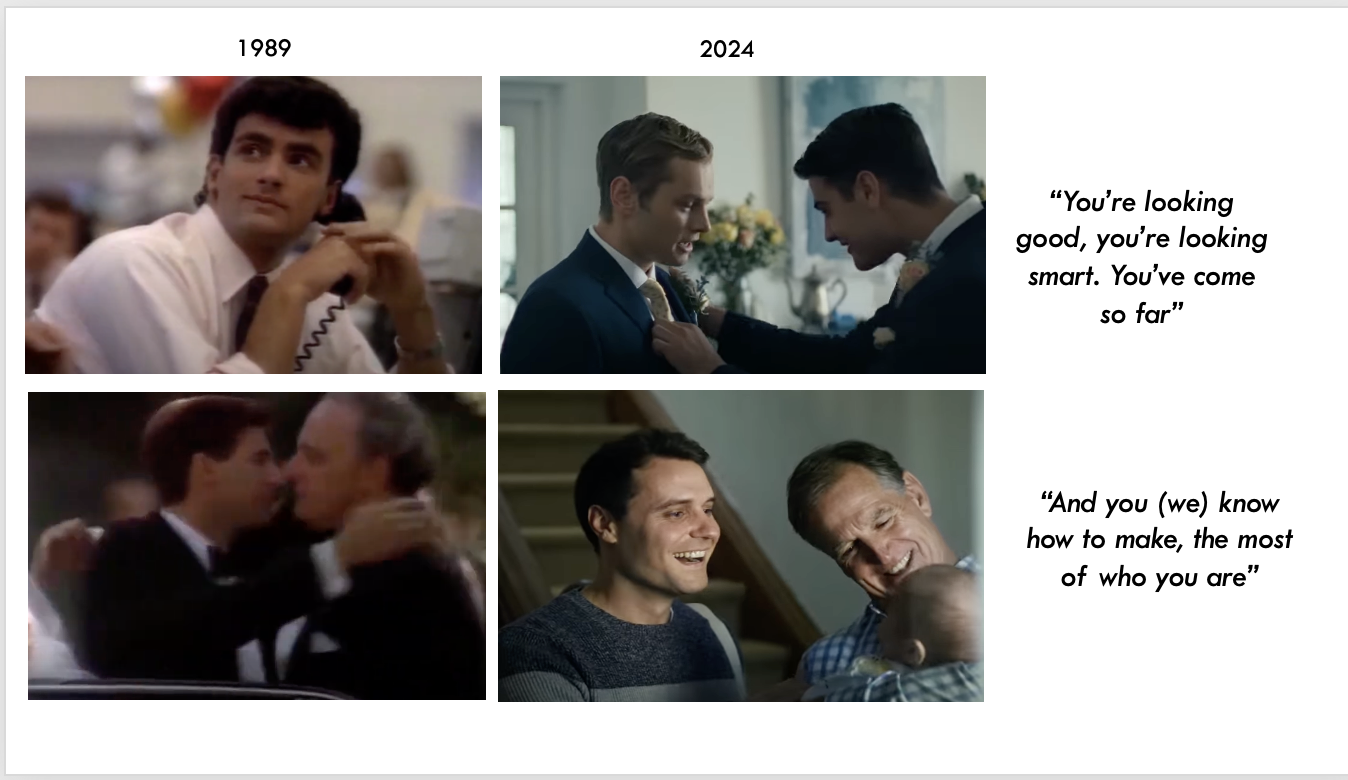
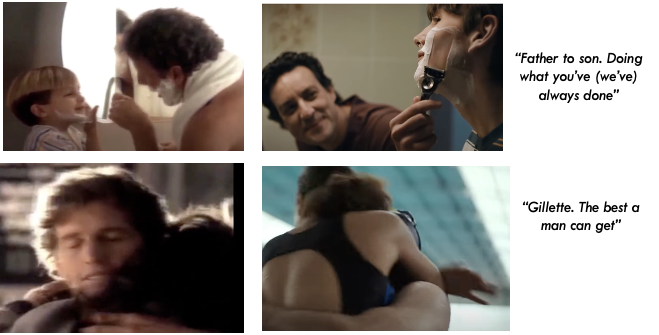
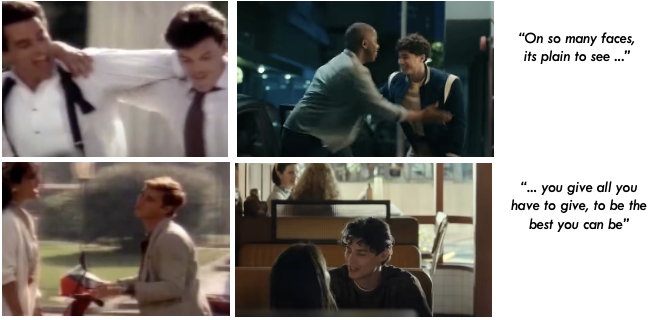
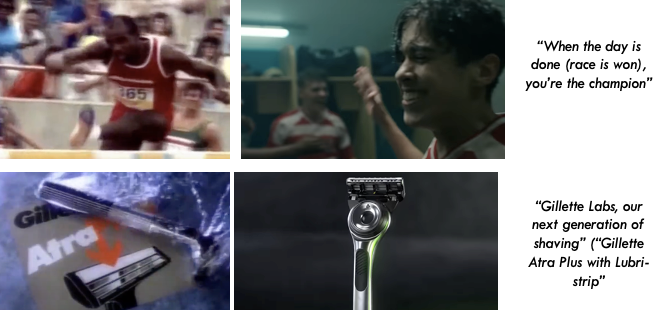
UPDATE: with Contemporary Influences
To update the theme tune, Gillette has tapped into the vibrant energy of up-and-coming British singer Tom Grennan. His involvement brings a fresh and modern twist to the classic song. Grennan’s rendition of the iconic tune was not only released across traditional media platforms. It also took on a digital life of its own with a TikTok sing-along (below) and a “behind the scenes” making of YouTube film. These interactive elements broadened the reach of the campaign. They also created connection with a younger, digital-savvy audience that Gillette does need to recruit, as the brand suffers from having a lower brand share with Millennials vs the total population, as I posted on here.
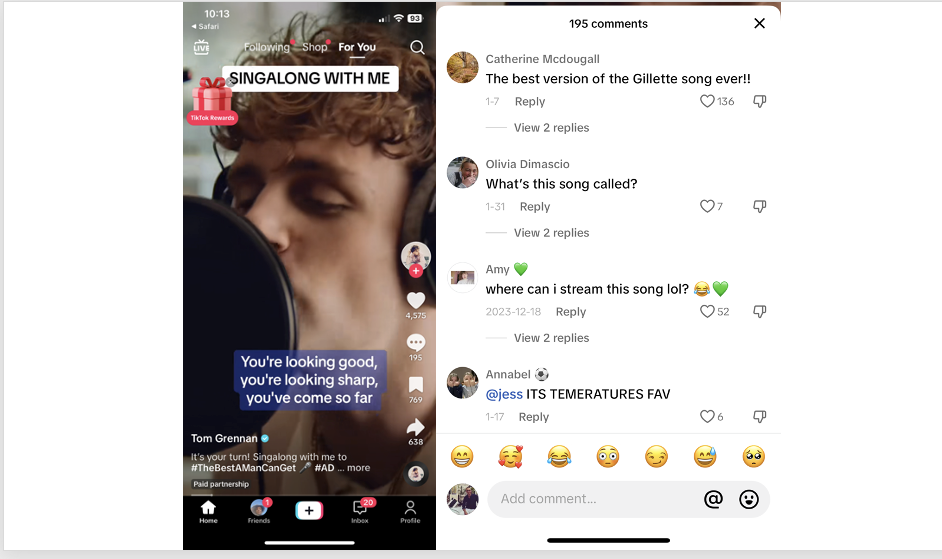
The portrayal of masculine achievement has also been updated to be a more contemporary. We still have, for example, sporting achievement. But rather than fist pumping victors, we have a changing room sequence with a coach and player celebrating. We have a romantic scene in a cafe, but the young guy and lady have equal roles, rather than the man being the centre of female adulation.
LOSE: polarising negativity
Gillette has made a conscious decision to move away from the controversies of the The Best a Man Can Be campaign, with its head-on tackling of toxic masculinity. Gillette has quietly dropped many of the key elements that it loudly trumpeted back in 2019:
- The Best a Man Can Be film itself is no longer on Gillette’s YouTube site as far as I could see. The link to the film in this post is actually on the Guardian’s website
- The Best a Man Can Be web pages created in 2019 to promote Gillette’s commitment to enable positive role models (below) are no longer on the brand’s website, though you can still find them online (5)
- Donation to Boys and Girls Club of America: back in 2019 Gillette announced plans to donate $1m a year for the next three years to this youth organisation. However, logging on to the organisation’s website shows that Gillette is no longer a donor. To note, 17 other companies donate more than the $1m a year Gillette contributed from 1989-1991, supporting the suggestion that Gillette’s storytelling on social issues was not fully backed up with story doing.
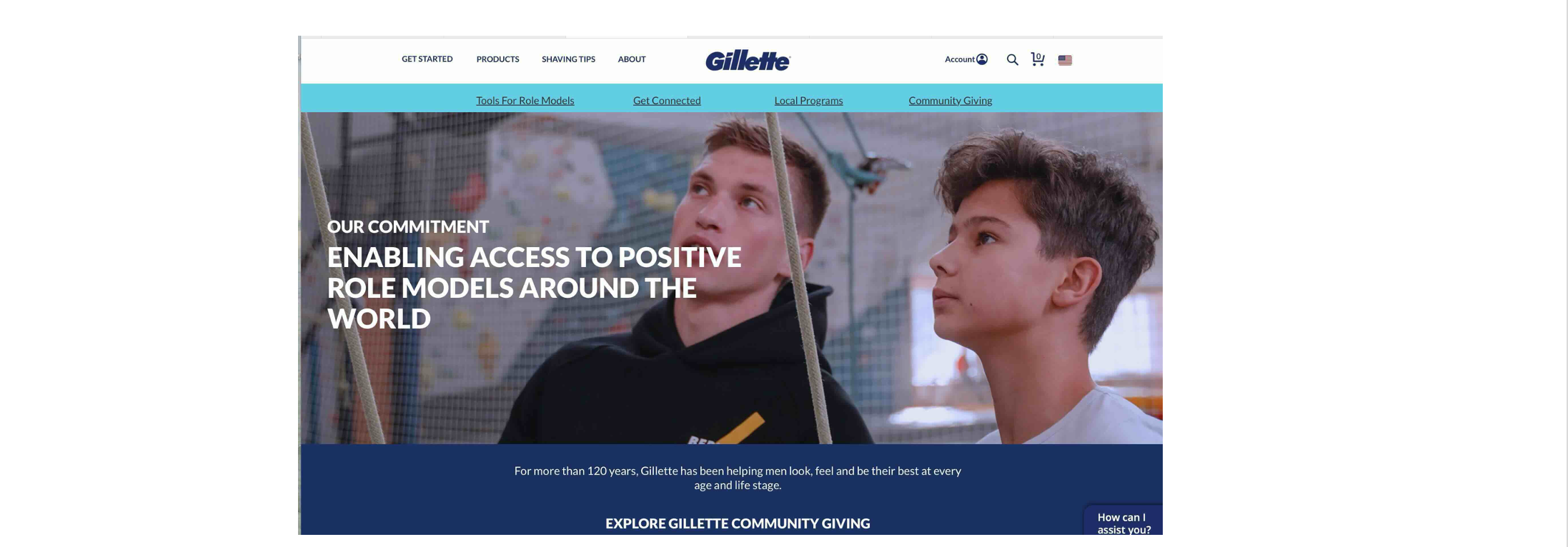
Losing the negative focus on the bad sides of masculinity seems smart. However, it is somehow disappointing that the brand seems to have also dropped some of its commitments to encouraging a positive take on masculine achievement. This is still a societal issue that needs positive action.
ADD: Modern Elements
The refreshed campaign isn’t just about maintaining the old, it’s also about embracing new trends in male grooming. Recognizing the growing trend toward body shaving and creating clean, bald looks, Gillette has smartly expanded its representation of what it means to be well-groomed. These additions help the brand stay relevant in a market where the definition of grooming is continuously evolving, appealing to a broader audience who values both traditional and modern grooming practices.
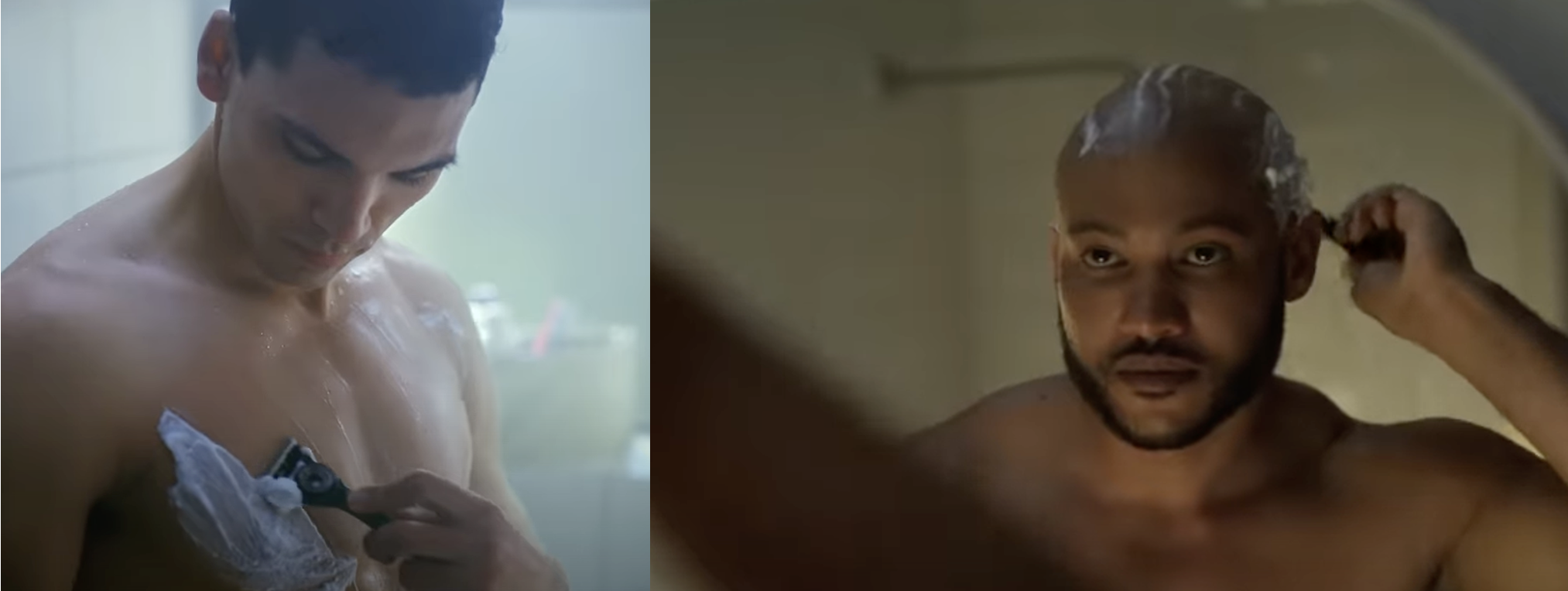
In conclusion, Gillette’s latest campaign seems to be a better balance of freshness and consistency, with a contemporary new take on the brand’s distinctive brand assets. I do love the new campaign, but I’m not the target they are seeking to recruit! I would love to hear from younger men and women (who are often buyers of razors for men): what do you think of the new campaign? We will also check back in future to see if this revised revitalisation approach has been effective.
